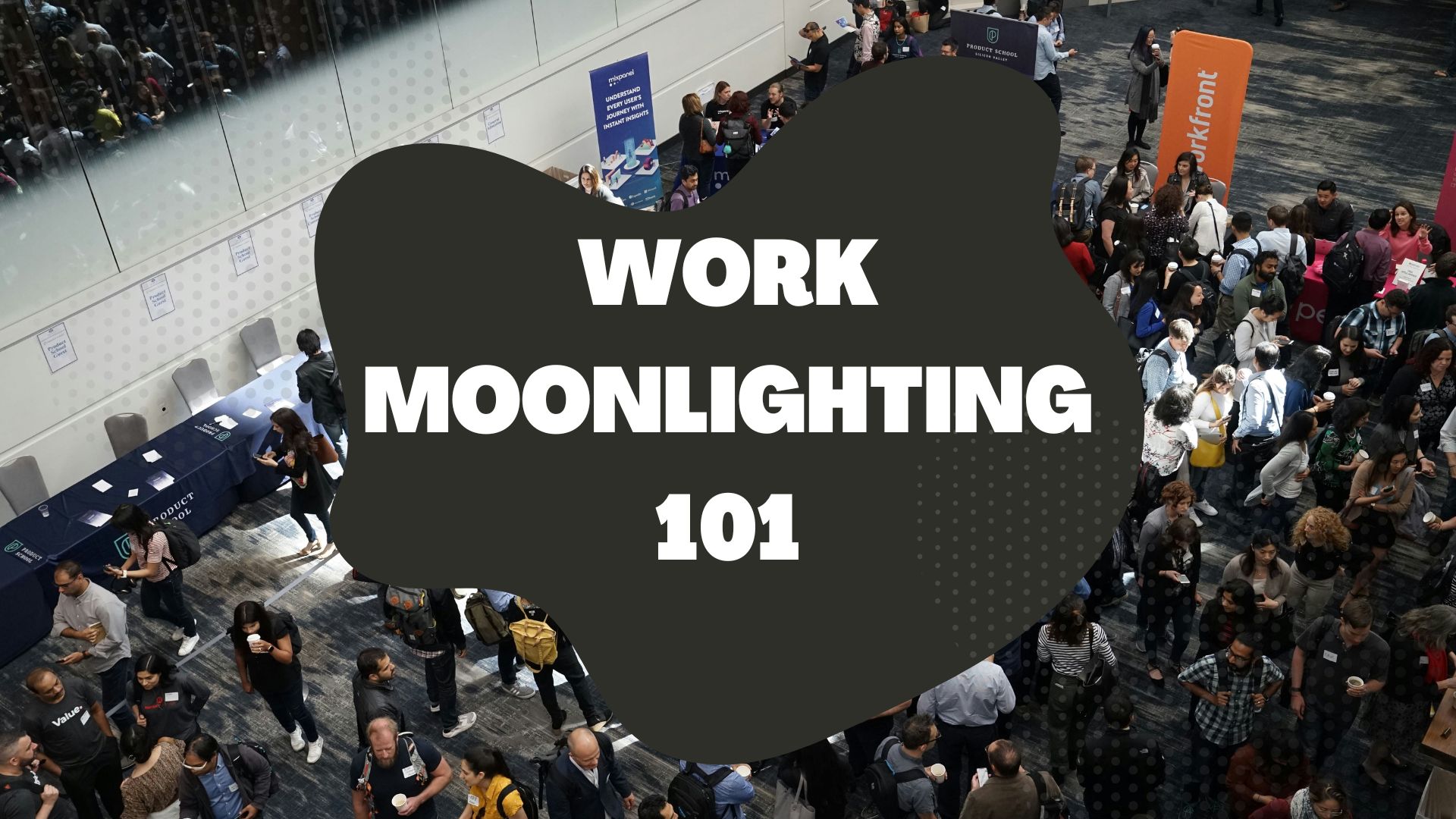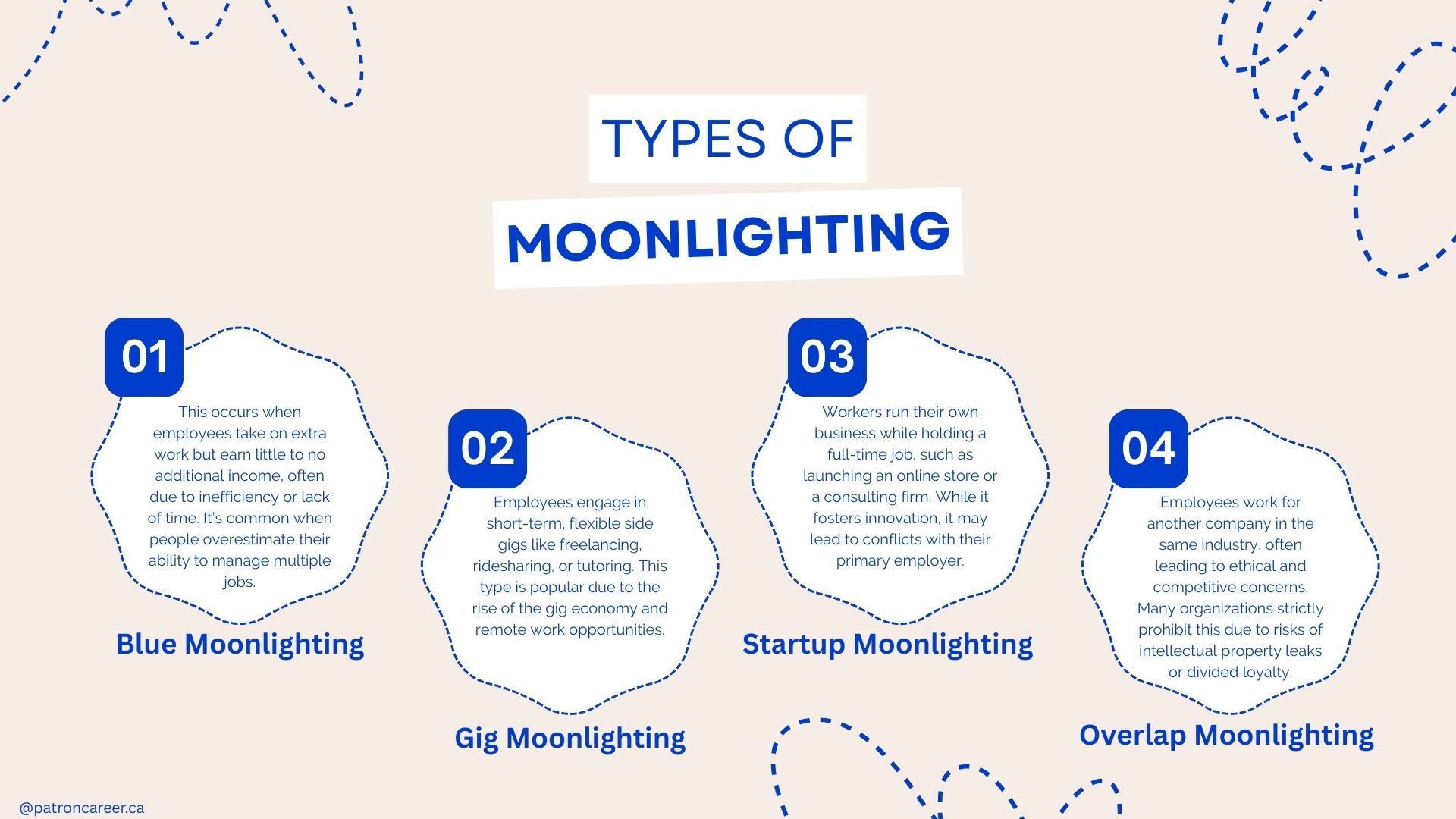The Truth About Moonlighting: Risks, Benefits & Employer Strategies
A fine line between hustle and conflict exists. Many employees engage in side gigs for reasons including supplementing income, diverse experiences, pursuing passion, flexibility, and even job dissatisfaction. This line is being increasingly blurred in today’s dynamic employment landscape. Thanks to the rise of remote work and flexible schedules, employees are taking on second jobs or freelance gigs outside their primary employment. But is moonlighting beneficial, or should you worry about it?
In this blog, we’ll break down everything you need to know about work moonlighting—what it is, why employees do it, the pros and against, and how employees can respond to it.
What Is Work Moonlighting After All?
Moonlighting is rapidly skyrocketing in employment, wherein employees take on a secondary job in addition to their full-time one. The moniker “work moonlighting” originated in the late 18 th and 19 th centuries, as more people shifted to urban areas to gain additional employment opportunities. This phenomenon has gained popularity with the accessibility of an abundance of jobs from the click of a button.
Related: What is Quiet Quitting?
Examples of Moonlighting
- A teacher providing home tutoring to students in the evening.
- A nurse working part-time at a private clinic on off-days.
- A manager is running a side business on weekends.
- A software engineer working on freelance projects after work hours.
While some employees are transparent about their moonlighting regimes, others prefer not to disclose it, especially when company policies restrict moonlighting.
Latest: How the 360-Degree Feedback Process Works?
Why Do Employees Moonlight?
Many employees fancy the gig economy to satisfy financial needs and fulfil personal aspirations. Various motivations drive employees to take on secondary jobs. Let's understand some of the common reasons:
1. Additional Income
When the cost of living rises, individuals succumb to seek extra earnings, especially in expensive cities where salary alone may not be adequate. Unexpected financial obligations and mounting debts also may be a factor pressing the need to take on extra jobs.
2. Passion and Skill Development
Some employees moonlight to pursue their interests or gain experience in a different field of work. A marketing executive may moonlight as a freelance graphic designer to cater to their creative skills.
3. Job Insecurity
Job dissatisfaction is one of the most prominent reasons why employees are choosing to moonlight and explore promising roles and greater fulfilment. It is needless to say that layoffs and economic uncertainty are booming, forcing workers to take on side jobs as a backup plan in case of job loss.
4. Career Transition
Employees looking to switch careers often take on side jobs to build experience before making a full transition.
5. Flexibility in the Gig Economy
Platforms like Upwork, Fiverr, and Uber make it easier for employees to earn extra income without committing to another full-time role. Many companies are increasingly coming up with policies to balance employee freedom and the challenges it brings for employers.
The Pros and Cons of Moonlighting
Let's give you a gist of the benefits and disadvantages of moonlighting:
The Upsides of Moonlighting
- Higher Income – Helps employees cover expenses and improve financial stability.
- Skill Enhancement – Expands knowledge and expertise in different domains.
- Networking Opportunities – Helps build professional connections outside their primary workplace.
- Personal Satisfaction – Allows employees to explore their interests and passions.
The Downsides of Moonlighting
- Productivity Issues – Fatigue from multiple jobs may affect primary job performance.
- Conflict of Interest – Side jobs may create ethical concerns or competition with the employer.
- Legal & Policy Violations – Some organizations have strict policies against moonlighting.
- Burnout & Stress – Managing multiple jobs can lead to exhaustion and health problems.
Also Read: Top 9 Reasons Why Employees Are Leaving Your Organization
How Can Employers Deal with Moonlighting?
As an employer, managing work moonlighting may take a toll on overall workplace efficiency and employee loyalty. Here are well-thought-out strategies to consider while dealing with moonlighting
1. Establish a Clear Moonlighting Policy
Building open lines of communication, promoting transparency and setting clear boundaries can go a long way in helping to deal with moonlighting. If you choose to allow side jobs, make sure you have requisite policies in place to tackle any disputes or conflicts of interest. Also, ensure to spread the work in the workforce, both in-house and remote.
2. A Bedrock of Transparency
Employees need to be given a chance to voice their opinions. It not only boosts their morale, but also creates an open environment where they can freely discuss side gigs. Many times, employers undermine the power of transparency, a lack of which sometimes creates a domino effect and hinders job satisfaction and productivity at work.
3. Keep Tabs on Employee Performance
Instead of outright banning moonlighting, evaluate employees based on their productivity and commitment to their primary job. If their work quality remains high, there may be no need for restrictions.
Related: The Hidden Productivity Killers
4. Reward With an Impressive Paycheck
Employees moonlight when financial burden and necessity hit them hard. To help them cope and provide support, offer generous compensation and add-on fringe benefits.
5. Focus on Employee Well-Being
Encourage work-life balance to prevent burnout. If employees feel overworked, they may struggle to manage both jobs effectively.
6. Address Conflict of Interest Risks
If employees take side gigs in the same industry, it can create competitive risks. Make sure policies clearly state restrictions on working for competitors or using company resources for personal projects.
Should Companies Allow Ban Moonlighting?
This is a question up for debate. But we are of the view that there is no blanket approach to handle the moonlighting dilemma. Some companies take a strict stance against moonlighting, while others adopt a flexible approach.
- Industries with Sensitive Data & Confidentiality Risks (e.g., IT, finance, healthcare, accounting, technology) often discourage moonlighting to prevent information leaks.
- Creative & Freelance-Friendly Industries (e.g., marketing, writing, design, transport) may permit employees to take on side projects, as long as they don’t interfere with company work.
Ultimately, the best approach is a balanced one, where companies set clear rules but also respect employees’ right to earn additional income in their free time.
Also Read: Proven Strategies to Improve Workplace Efficiency in Canada (2025)
The Bottom Line
Work moonlighting is a growing trend in the current Canadian workforce. It brings numerous opportunities for employees and challenges for employers. Whether you choose to curtail or allow moonlighting, be based on strategic policies and keeping in mind the needs of employees. For employees, moonlighting requires discipline and self-care to avoid excessive burnout. If you are considering taking on multiple jobs, make sure they align with the company policies and don’t impact your primary job.
Would you allow moonlighting in your workplace? Share your thoughts with us!






